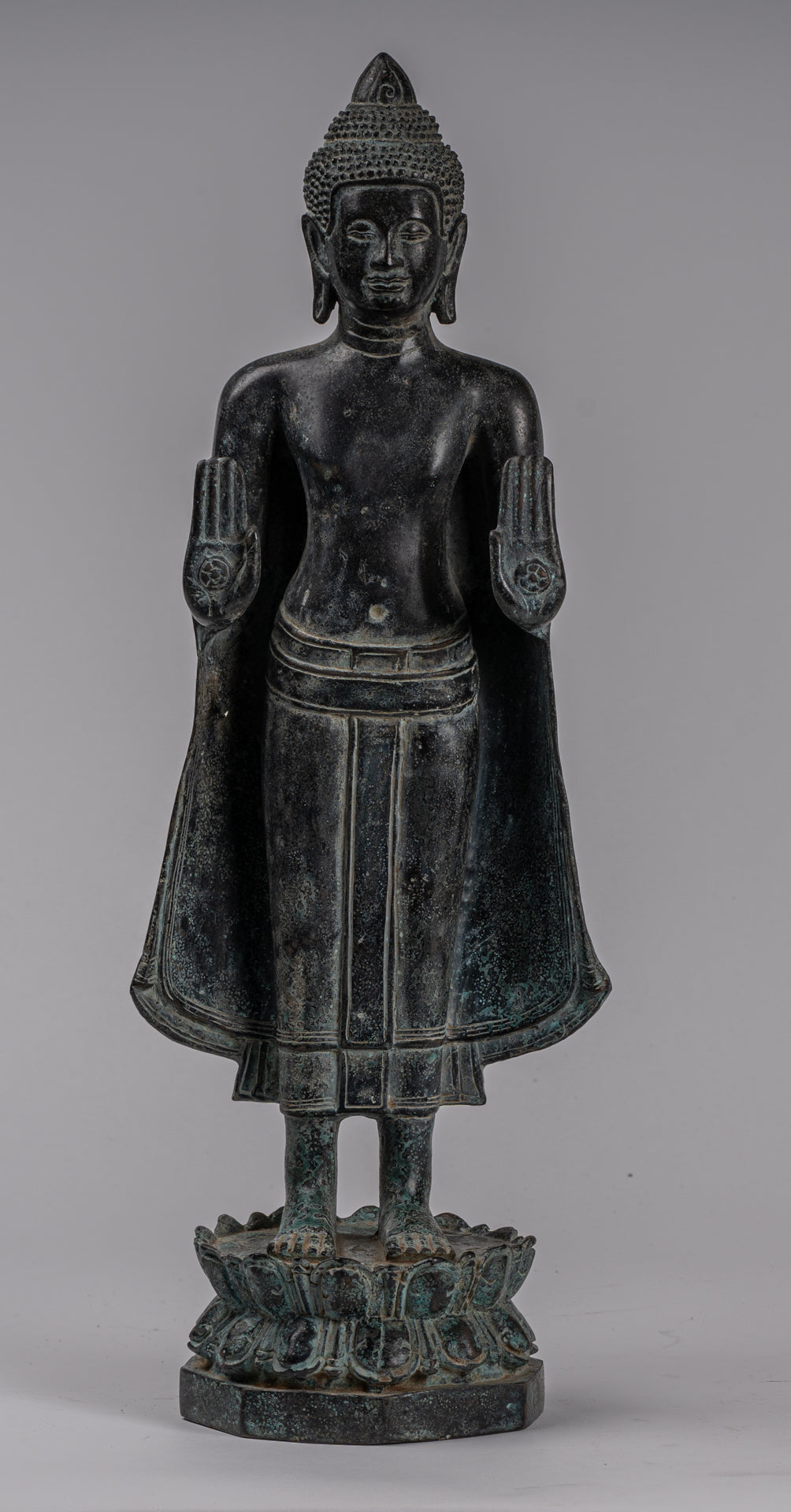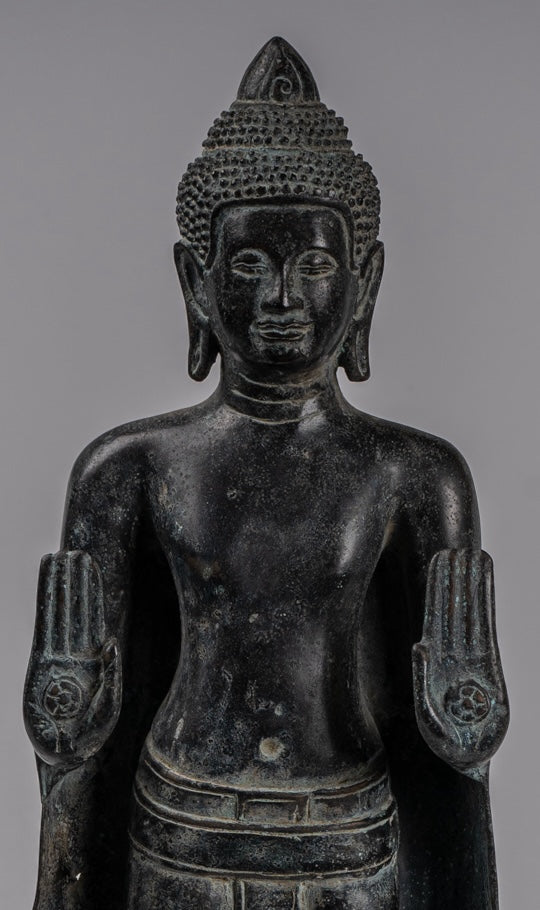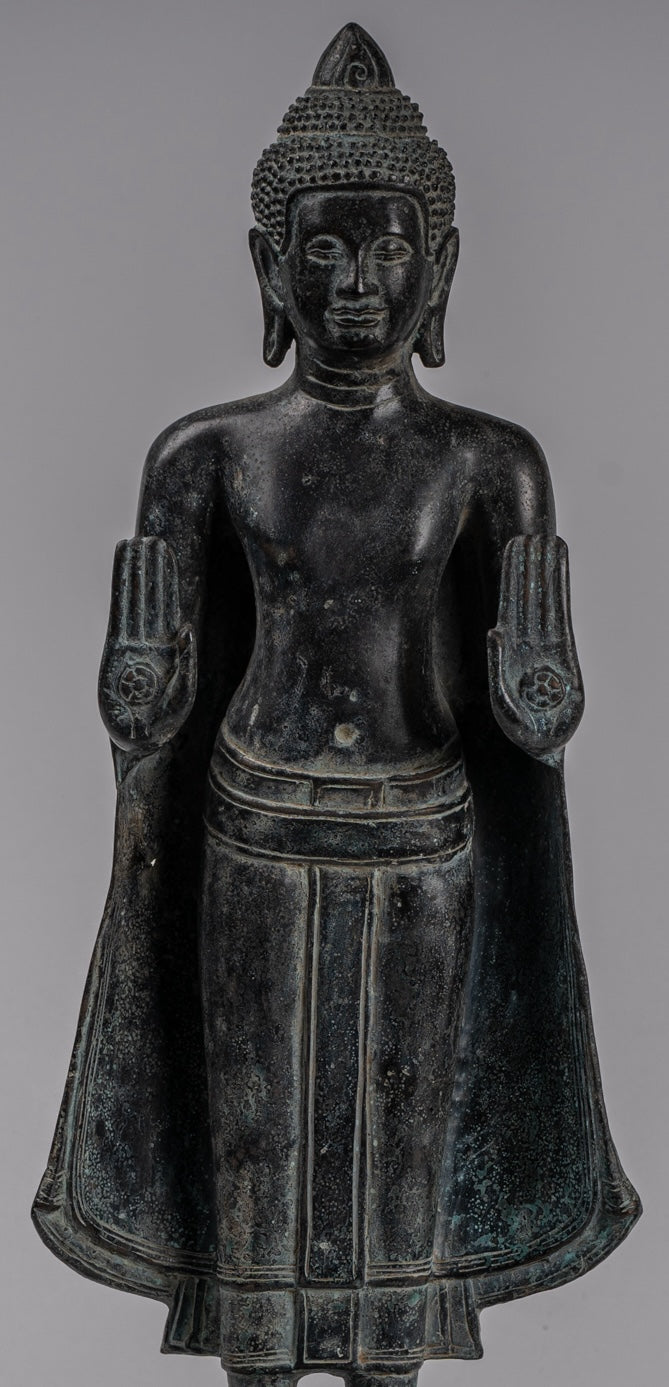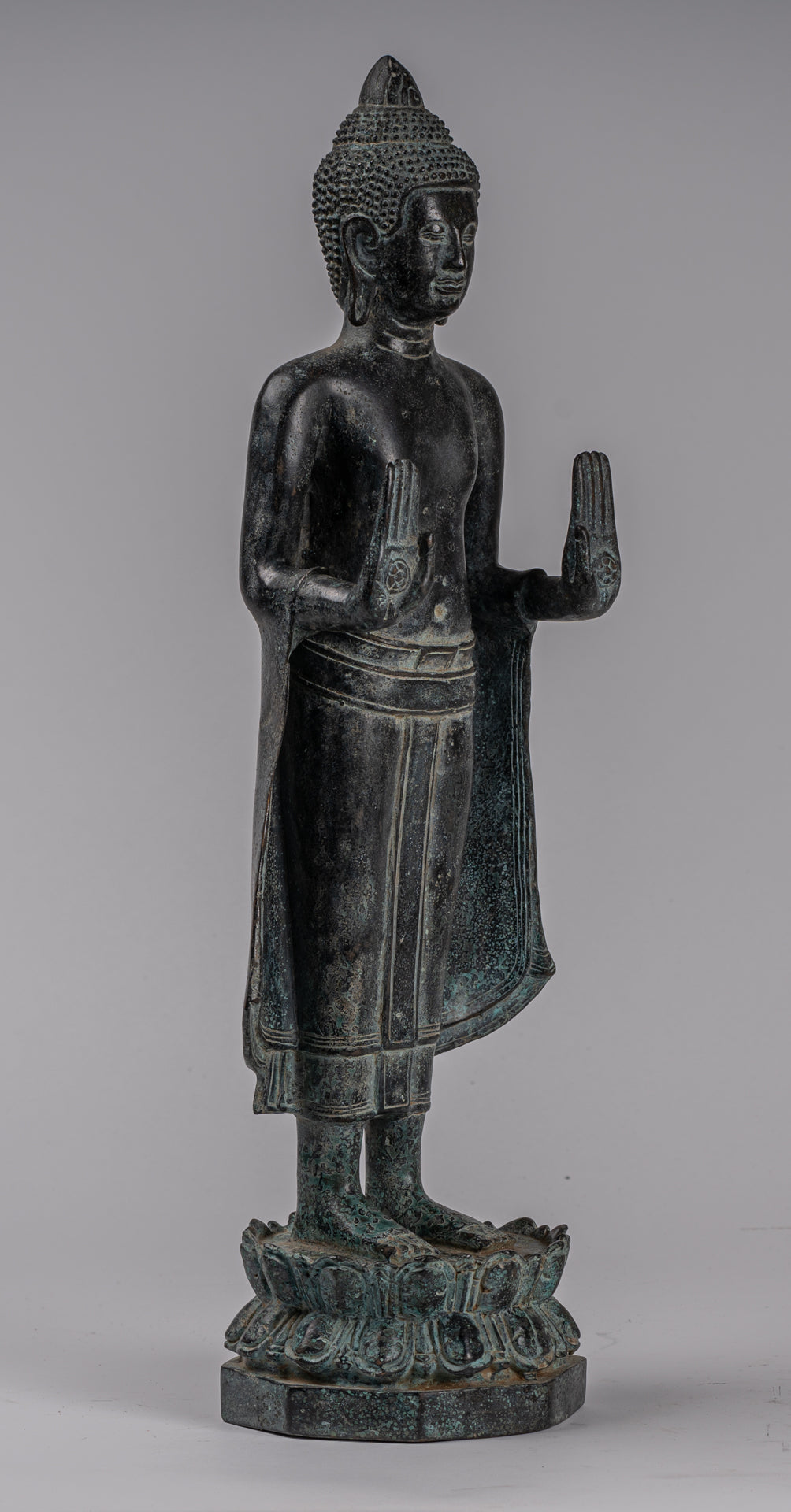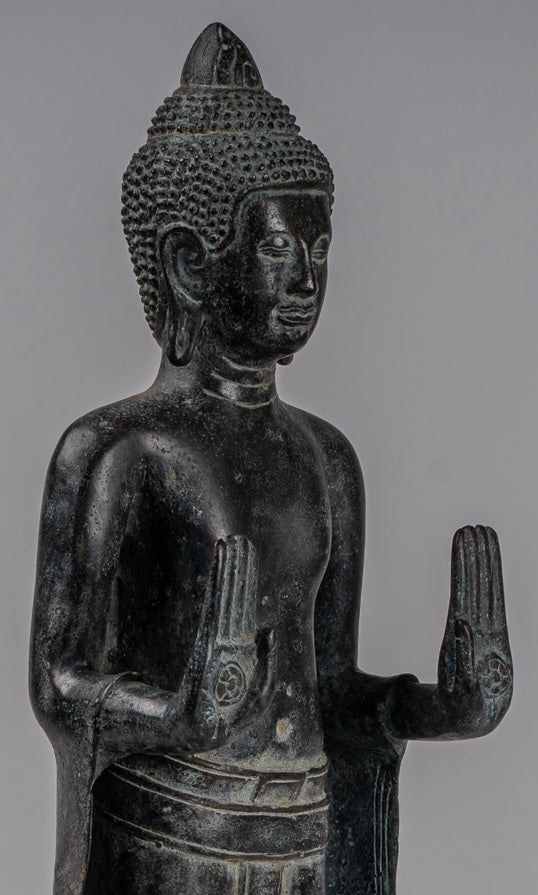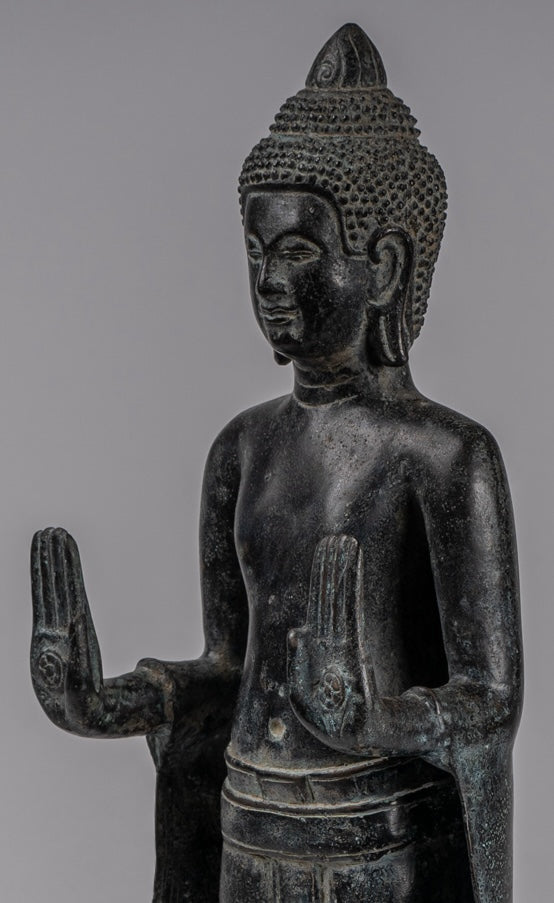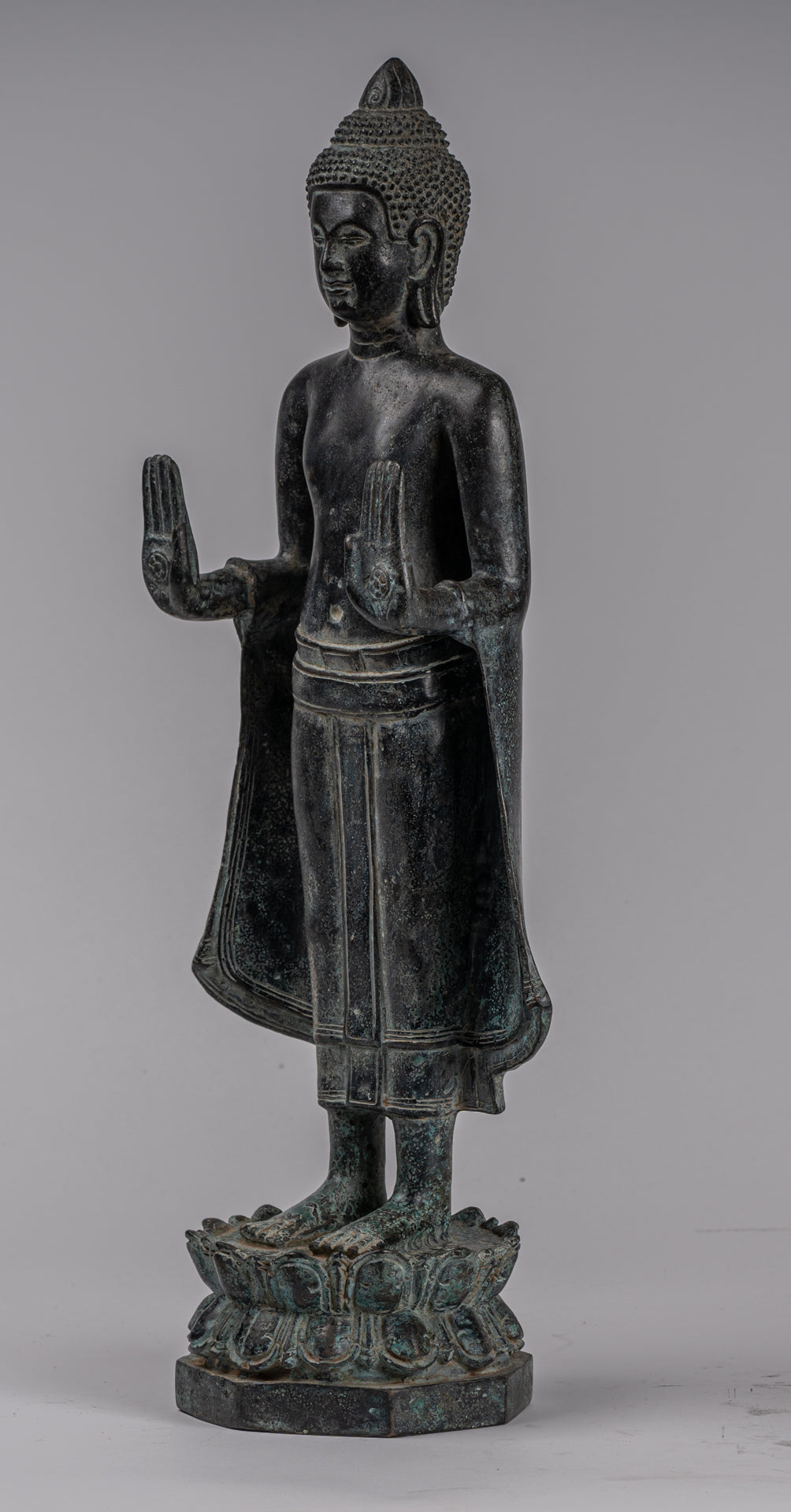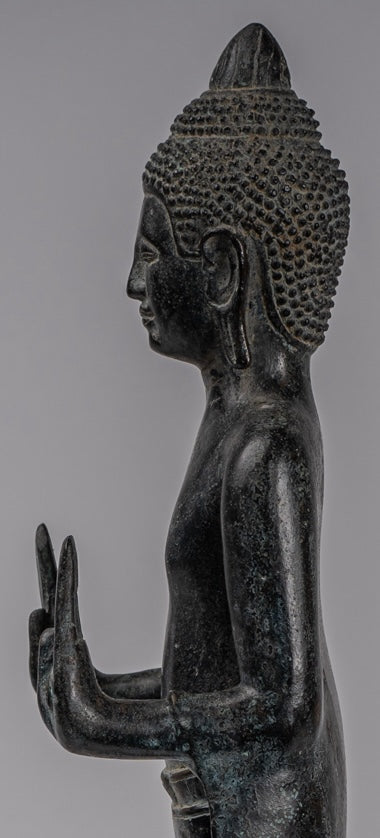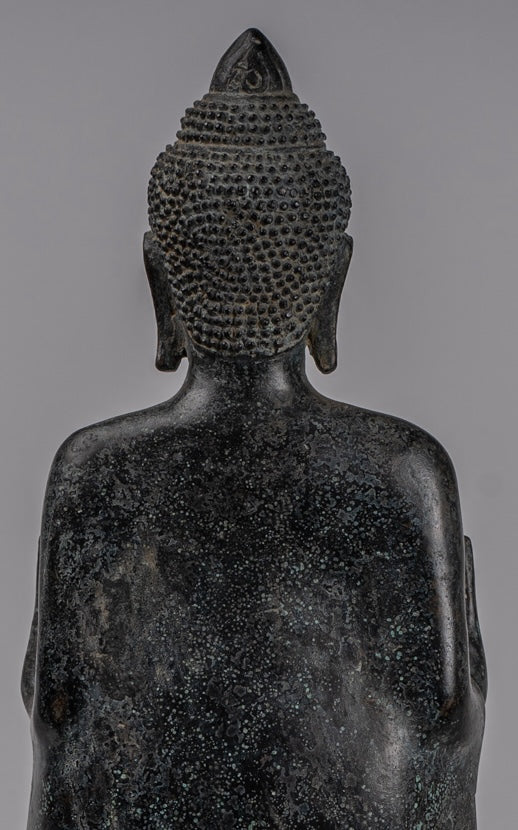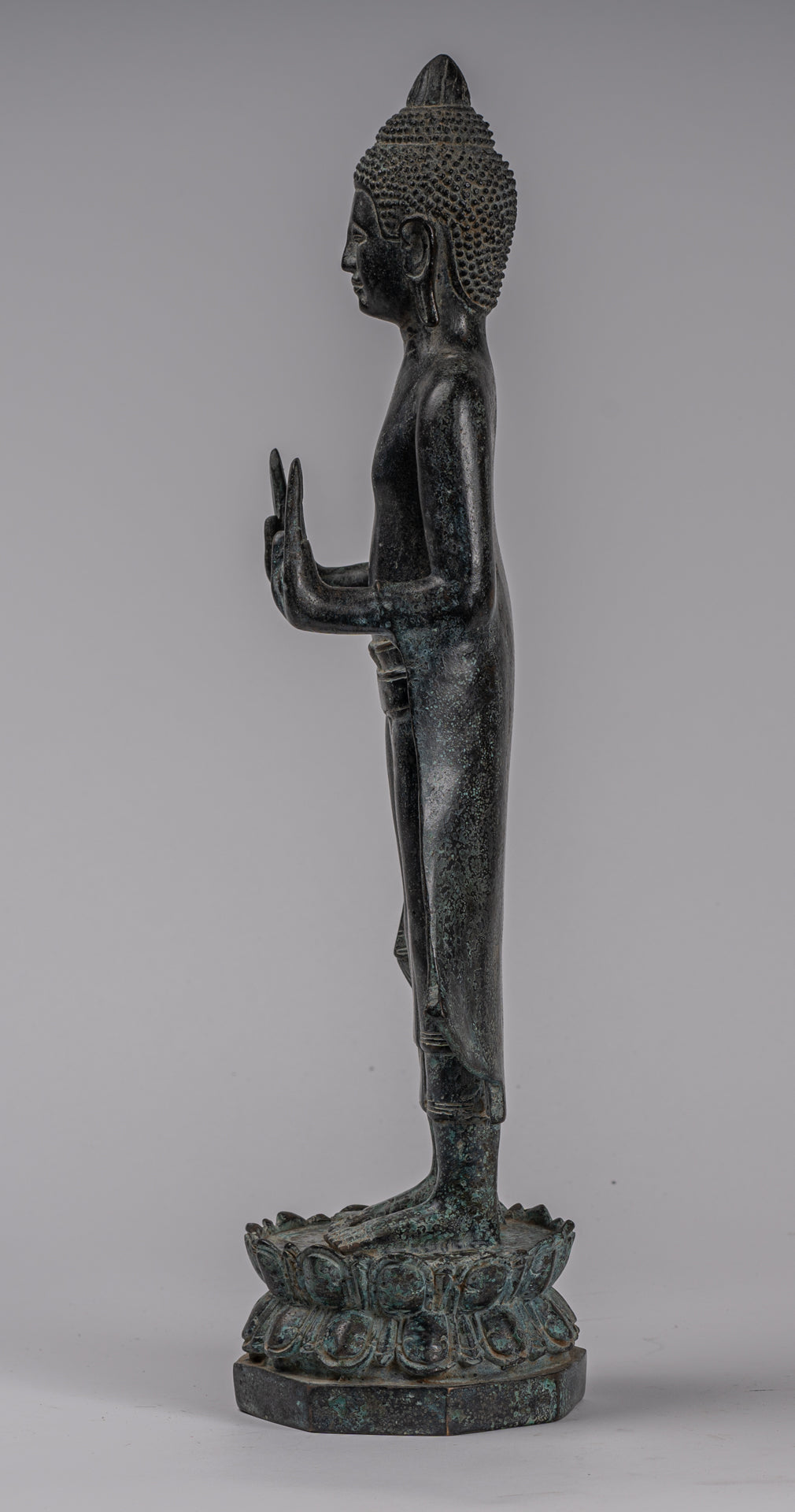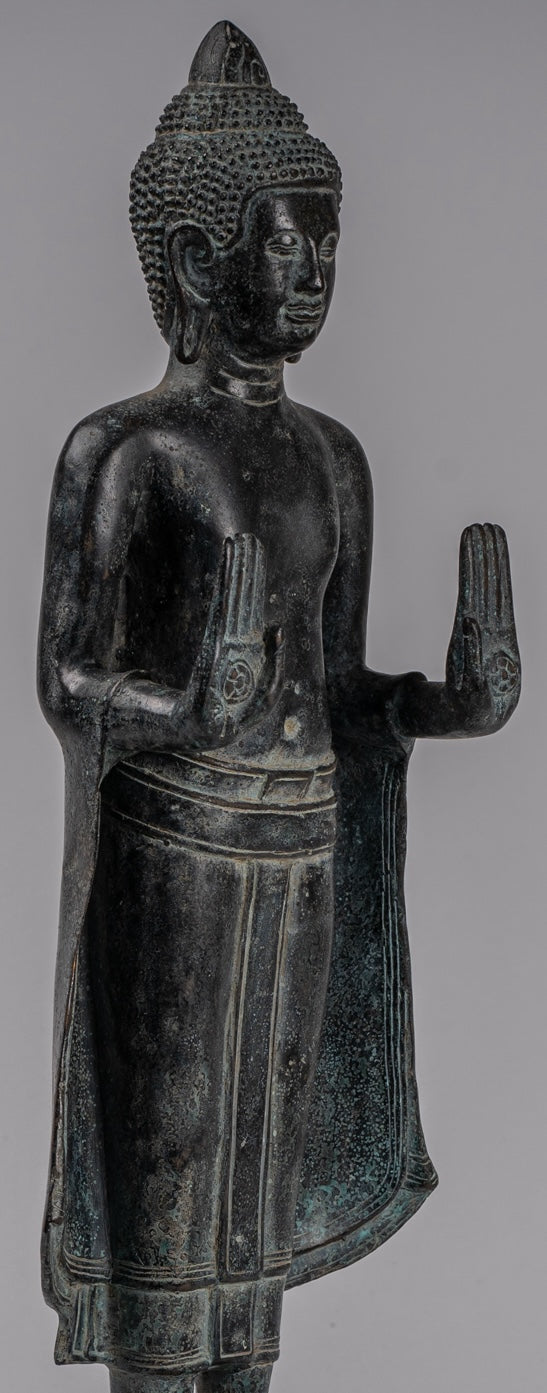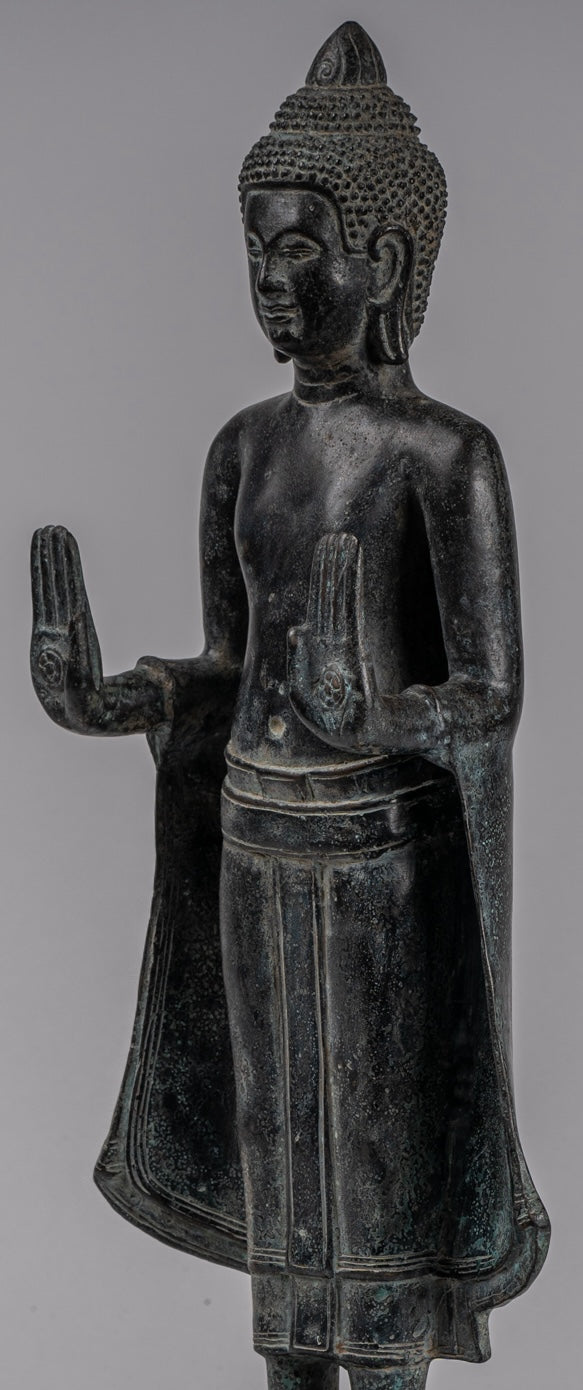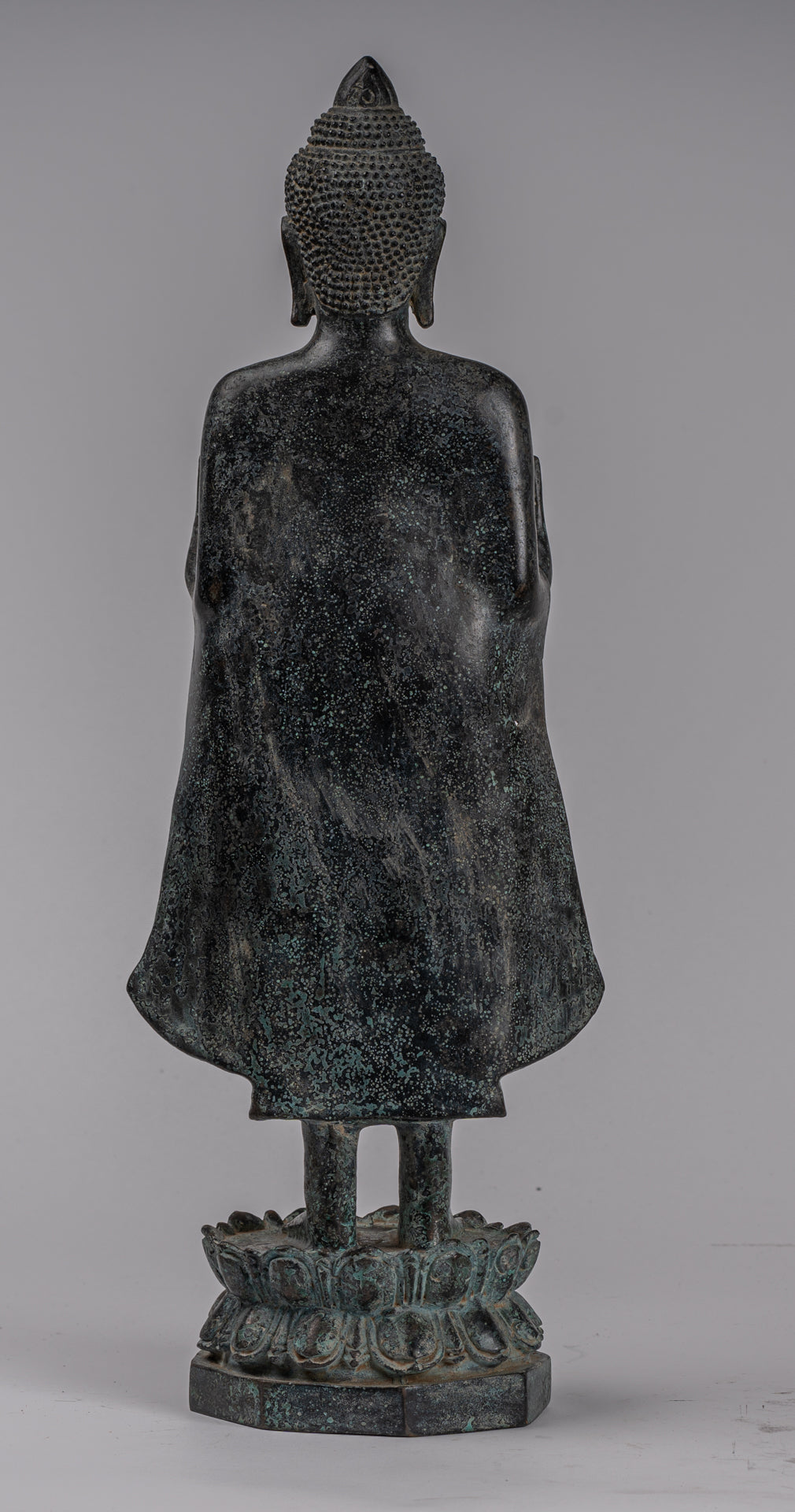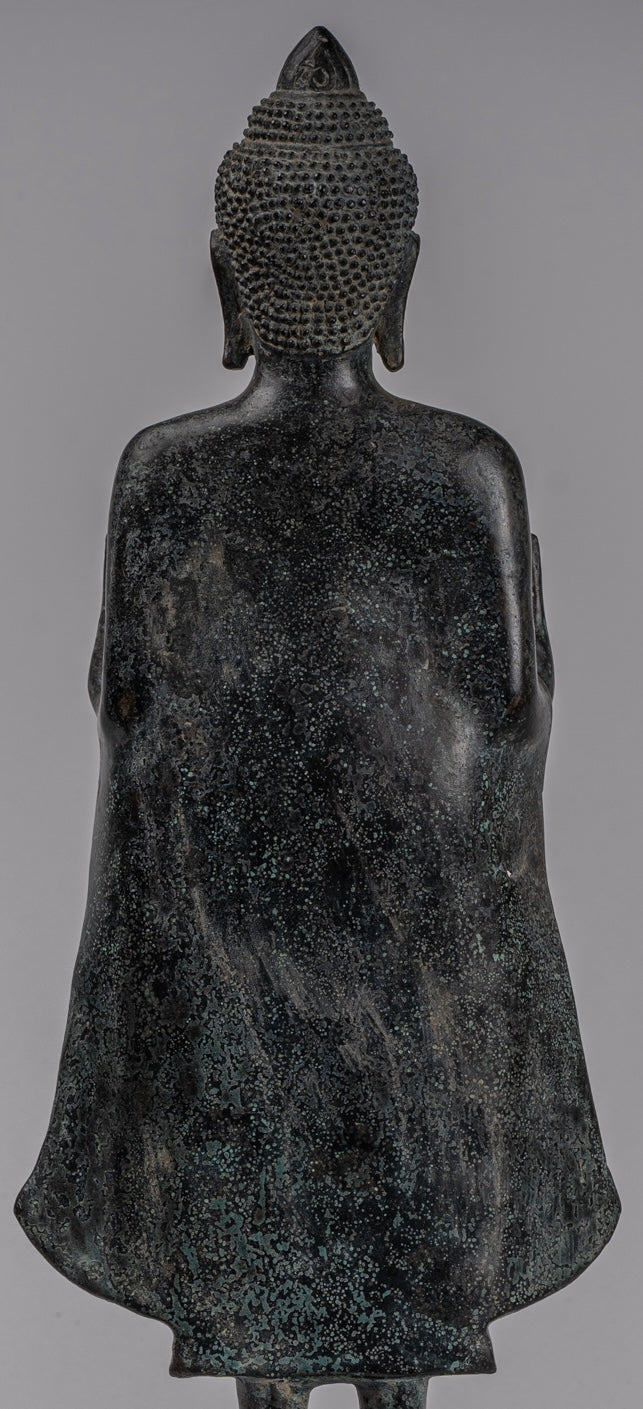-
Antique Khmer Style Bronze Double Abhaya Mudra Protection Buddha Statue - 49cm/20"
Measures (Height) 49cm/20"
An antique Khmer style Buddha from HD Asian Art depicting the Buddha after his enlightenment.
The Lord Buddha is stood in the double Abhaya or protection mudra.
In the serene world of Buddhist iconography, the Abhaya Buddha emerges as a symbol of fearlessness and compassion. The gentle gesture of the raised hand, offering reassurance and protection, distinguishes this representation of the Buddha.
The Abhaya mudra "gesture of fearlessness" is a mudra (gesture) that offers protection, reassurance and safety. Dispelling fear and according divine protection and bliss in many Indian religions. This is one of the earliest mudras found depicted on a number of Hindu, Buddhist and Jain images.
In a world often characterized by uncertainty and anxiety, the symbolism of the Abhaya Buddha resonates deeply. The mudra serves as a timeless reminder that, even in the face of life's challenges, the path of compassion and fearlessness can lead to inner peace and strength.
The large ushnisha protuberance on top of his head symbolizes his high level of spiritual development. The Buddha has a peaceful countenance with downcast introspective eyes and a firm brow. His earlobes are stretched long from a youth spent as a prince wearing heavy gold earrings.
The peaceful countenance of Lord Buddha exudes harmony. The Buddha's hands are held up in the double abhaya mudra. The Abhaya mudra "gesture of fearlessness" is a mudra (gesture) that offers protection, reassurance and safety. Dispelling fear and according divine protection and bliss in many Indian religions. Both hands are held upright, and the palms are facing outwards. This is one of the earliest mudras found depicted on a number of Hindu, Buddhist and Jain images.
A Mandala decorates the palm of the Buddha's outstretched hand, a symbol of meditation and serenity.
In various spiritual traditions, mandalas can be used to focus the attention of practitioners and adepts, as a spiritual guidance tool, for establishing a sacred space and as an aid to meditation. In the Eastern religions of Hinduism, Buddhism, Jainism and Shinto it is used as a map representing deities, or especially in the case of Shinto, paradises, kami or actual shrines.
A mandala generally represents the spiritual journey, starting from outside to the inner core, through layers.
The Buddha is stood samapda on a double lotus leaf pedestal. The lotus flower represents purity, compassion and the giving of great joy to all.
The Abhaya Buddha, with its powerful mudra and compassionate presence, invites us to embrace fearlessness and cultivate compassion in our journey through life. As we contemplate the symbolism of the raised hands and the teachings they embody, may we find inspiration to face challenges with courage, extend compassion to others, and walk the path towards inner peace and fearlessness.
The Abhaya Buddha stands as a timeless beacon, guiding us towards a life filled with courage, compassion, and the dispelling of fear.
The casting is beautiful as you can see in the fine details of the face. Each detail is rendered perfectly. The distinctive azurite and malachite patina of the piece is also particularly delightful.
The sculpture provides the perfect traditional in appearance Buddha to bring serenity and timeless style to your home, office or sacred space.
SATISFACTION GUARANTEE - We have been offering SE Asian Art for many years and are proud of the reputation we have developed for fair and honest listings. However, if for any reason, whatsoever, you are unhappy with your purchase please just let us know and we will provide a full refund. We want you to be 100% happy with your purchase.
-
The majority of orders will be shipped with DHL. This is a secure, express and fully tracked service.
Items less than 2Kg we typically ship using Royal Mail.
Once we receive your order we try to ship all orders the same or next working day.
Large and/or fragile pieces requiring palletising, specialist crating and/or extra packaging may take a little longer. Palletised shipments will be delivered curbside.
All orders over 35 GBP will be shipped free of charge.

-
We genuinely hope that all purchases delight.
However, if they do not, regardless of reason, we will refund all orders upon receipt of the unwanted item. Just notify us within 14 days of receiving your order that you wish to make a return and send the piece back to us with 30 days of delivery.
If you’re looking to buy a Ganesha statue in the UK, you’ll quickly discover a world of exquisite craftsmanship, deep symbolism, and cultural heritage. The Lord Ganesha statue—beloved as the remover of obstacles and the god of wisdom—holds a special place in homes and temples around the world.
But finding the perfect piece, whether carved from wood, shaped in stone, or cast in bronze, requires an understanding of both artistic technique and spiritual significance.


